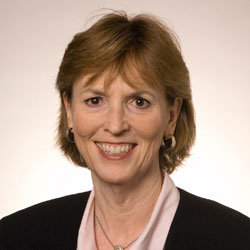
I was excited to attend the first Supercomputing Conference in Orlando in 1988. No one had any idea it would grow into the premier HPC conference it is today with more than 10,000 attendees representing almost every corner of the globe. But, even 25 years ago there was a sense of possibility that galvanized the participants representing government, academia and industry. I was a first line supervisor at the time, awed by the opportunity to meet some of the luminaries in the field– Seymour Cray, George Michael, and Sidney Fernbach to name a few – all of whom now have awards named after them!
There was a familial atmosphere at the conference, and throughout the week you could get around and talk to any of the people you wanted to interact with, including the great names. Now the conference is so big this can’t happen much anymore. The sessions in ‘88 were serious, even intense, but there was great camaraderie and we managed to have a lot of fun. This remains a characteristic of the conference today and, I believe, a reason for its success. The relationships established and nourished at SC have catalyzed advances in HPC.
While there was not the large exhibit floor in ‘88, we did get to see cutting edge technology. The buzz was all about the visualization theater, which showed "Pixar-quality" animations that would be cool even by today’s standards. Even with a ticket, I waited in line a long time to get into the visualization theater. On the hardware side of things, the talk was still all about vector computing systems. It wasn’t until a year later (1989) that rebels rode the "attack of the killer micros" into advocacy for the massively parallel systems we know today. Back then it was a radical idea.
My recollection is that SC began in reaction to another supercomputing conference which had a decidedly more commercial flavor, and which many in government labs, academia, and other ‘public’ HPC centers thought reflected poorly on the community. With support from the U.S. Department of Energy, Lawrence Livermore’s George Michael took up the challenge (with others) and organized the first SC – SC88. IBM’s Joanne Martin was a key contributor to organizing and getting community support to start the volunteer conference that became SC. Initially working behind the scenes, she became Chair of SC’90.
The first conference had 1,495 attendees, 36 exhibitors and a total budget of $500,000. Today SC attracts more than 10,000 attendees, hundreds of exhibitors and has a multi-million dollar budget.
Having attended almost every conference since 1988, I’m gratified to see how SC has evolved with a broader technical program, exponentially larger exhibit space, and education programs that include a dedicated effort to make the community more inclusive. One thing that hasn’t changed over the last quarter century, however, is the intellectually vibrant atmosphere, the excitement about the future and how the community can shape it, and the fun that brings us together each year.
Dona Crawford is the Associate Director for the Computation Directorate at Lawrence Livermore National Laboratory and a past chair of SC.



Join the Discussion (0)
Become a Member or Sign In to Post a Comment